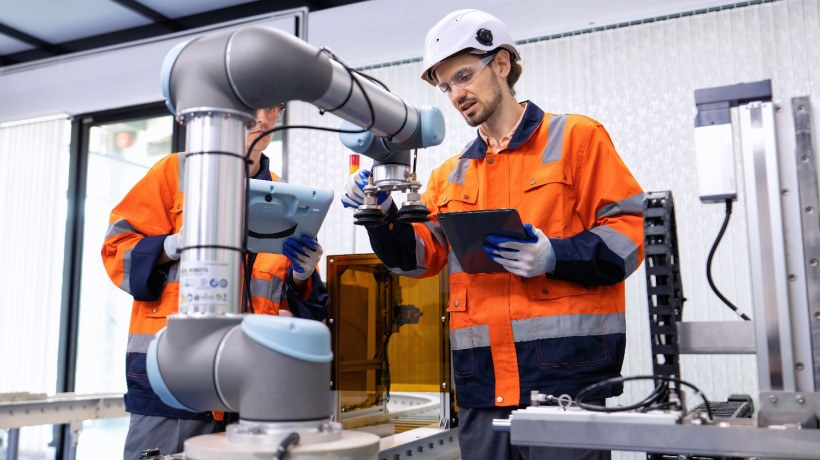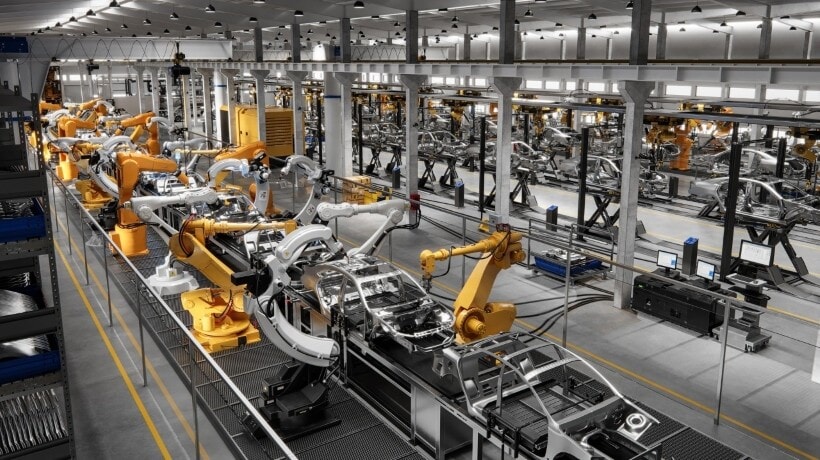Elevating Manufacturing Training
Imagine sitting through mandatory training presented in the most tedious way possible. You get the feeling that it's only done to get it out of the way and tick it off a checklist of topics. Unfortunately, this is often the norm in manufacturing. Employees have to go through training sessions with the sole purpose of compliance. While this approach gets things done, it doesn't spark any interest in employees who struggle to pay attention. This leads to workers with minimal knowledge being prone to mistakes that can put themselves or their coworkers in peril. Below, we'll explore the consequences of this approach and some tips that will help you break free of dull manufacturing training sessions.

The Negative Impact Of Uninteresting Manufacturing Training
Lack Of Engagement
The major problem with check-the-box manufacturing training is that it disengages employees. This method is almost always passive, and your workforce sits there listening to lengthy sessions without any participation involved. Plus, their different backgrounds and experiences aren't taken into consideration. Not everyone has the same preferences, and giving them generic training materials fails to meet their needs. So, it's only logical that your employees will lose interest in the training process since they can't actively engage with the learning material and may find that it's irrelevant to their professional goals.
No Critical Thinking
Manufacturing training is, by default, meant to be followed step by step to ensure employee safety. While your workforce might be able to check all the boxes successfully, they are missing critical thinking. Surely, they can follow instructions, but they must also analyze, evaluate, and even question what they learn. Critical thinking is a useful skill for troubleshooting, for example. As long as manufacturing training is solely about learning material by heart instead of putting it into practice, your workforce's independent thoughts are being put aside. Also, they may struggle to cope when things don't go as planned or adapt to an unexpected situation.
Employee Turnover
Ineffective training drains not only your employees' energy and job satisfaction but also your resources. The more dissatisfied your workforce is, the more they'll abandon the company and seek better opportunities. This isn't caused just by boring presentations in a training course but also by not providing them with meaningful development opportunities. Your employees will feel that there aren't any prospects for professional advancement and that their needs are entirely ignored. All these create a recipe for disaster, during which you'll constantly lose talent and spend your time and money on recruiting and training all over again.
4 Ways To Practice Effective Manufacturing Training
1. Build A Foundation
You need to set your goals to create the best manufacturing training plan for your team. What skills do your employees need? What compliance topics should they be experts at? What do you hope to achieve with the training? Answering these questions and shaping your plan accordingly will ensure that the process is meaningful. Then, you need to check your current training methods. If you deliver training through static and outdated material, it's time for a change. What other improvements does your program need? Are your instructors well-trained? Do you have adequate training equipment? During this needs assessment phase, you should also consult with everyone involved, from employees to investors.
2. Embrace Technology
The most crucial step towards vamping up your manufacturing training is investing in new technologies and software. To increase engagement and participation, interactive elements are a must. Immersive learning methods like leveraging VR and AR for training can go a long way toward delivering the learning material more effectively. Your employees will find themselves in virtual environments where they can practice what they learn, engaging in a more fun and purposeful process. Other interactive elements to consider are gamification, which can turn boring lessons into fun game-like sessions, or multimedia, such as videos and podcasts.
3. Customize Training Programs
As mentioned above, check-the-box manufacturing training doesn't address each employee's unique needs. Training should be tailored according to everyone's job role, for starters. Providing a one-size-fits-all approach saves you time but doesn't achieve the desired outcome. So, create role-specific programs and try to address every employee's learning preferences. Consider their experience level. Then, allow them to select their preferred lesson type on their own. If you provide lessons through an LMS, offer them a variety of options to choose from, like microlearning modules, interactive guides, and scenarios.
4. Encourage Continuous Learning
Having a workforce that learns continuously is what every company should aspire to. Promoting continuous learning starts from the top, with leaders and upper management prioritizing training initiatives. When employees see that learning is part of the work culture, they won't feel like training is just about going through the motions. So, apart from mandatory training initiatives, provide your employees with additional learning opportunities, such as upskilling programs. You can even encourage them to set their own learning goals and milestones.
How To Overcome Challenges
Address Resistance To Change
Changes aren't easy to implement, especially if your manufacturing facility has had standard practices and procedures for years. Employees may feel hesitant to move on from the checkbox training approach out of fear or not being familiar with technology. Plus, they may even start thinking that this new wave of training will lead to downsizing. To address this resistance, communicate openly and explain the reason for adopting this change. Involve all stakeholders early in the process to establish transparency and show your employees that they have nothing to fear. Overall, be patient and don't give up if your workforce or managers refuse to proceed with the change. Steady steps will get you there sooner than you may think.
Communicate The Benefits
Start by clearly stating why check-the-box training doesn't work anymore. Explain everything about missed improvement opportunities, loss of talent, and waste of resources. The more relatable the problems are, the more eager they'll be to try the new approach. Then, proceed with highlighting the benefits. Where will this new training take them, both professionally and personally? How will it make their work day better? In fact, it's better if you share the actual results of facilities that have implemented innovative training programs. The successful outcome of other similar initiatives will make all stakeholders more open to change.
Provide Support And Resources
You can't expect everyone to jump right into the new manufacturing training program. People will need some time to familiarize themselves with all the new tools and technologies, or else they won't support the change. Offer them resources like manuals, videos, or instructor-led programs that will guide them through the new equipment and software. Give them time to process everything and don't rush into it. It's better if they need six months to acclimate but perform perfectly than to begin training immediately but have zero results.
Conclusion
Technology has caused the manufacturing industry to change rapidly, and the above guide will help you begin the process of transforming your training program and pave the way for your workforce's professional and personal growth. However, don't forget to keep up with training trends—new technological advancements are constantly emerging to shake things up and help you enrich your L&D programs.








